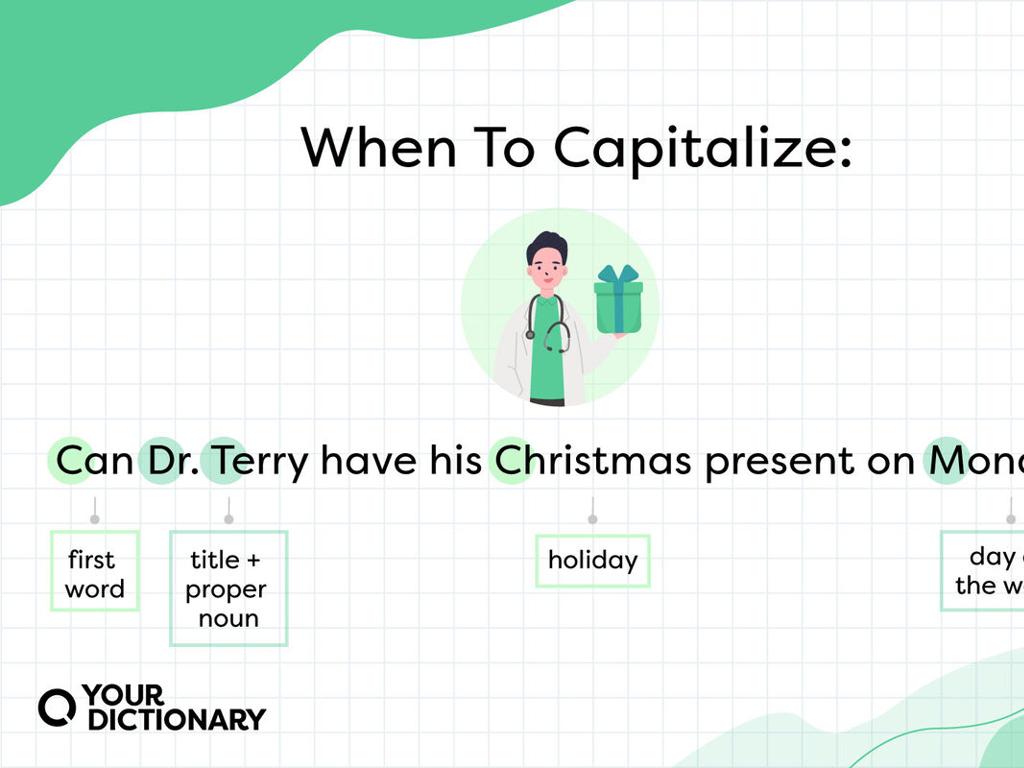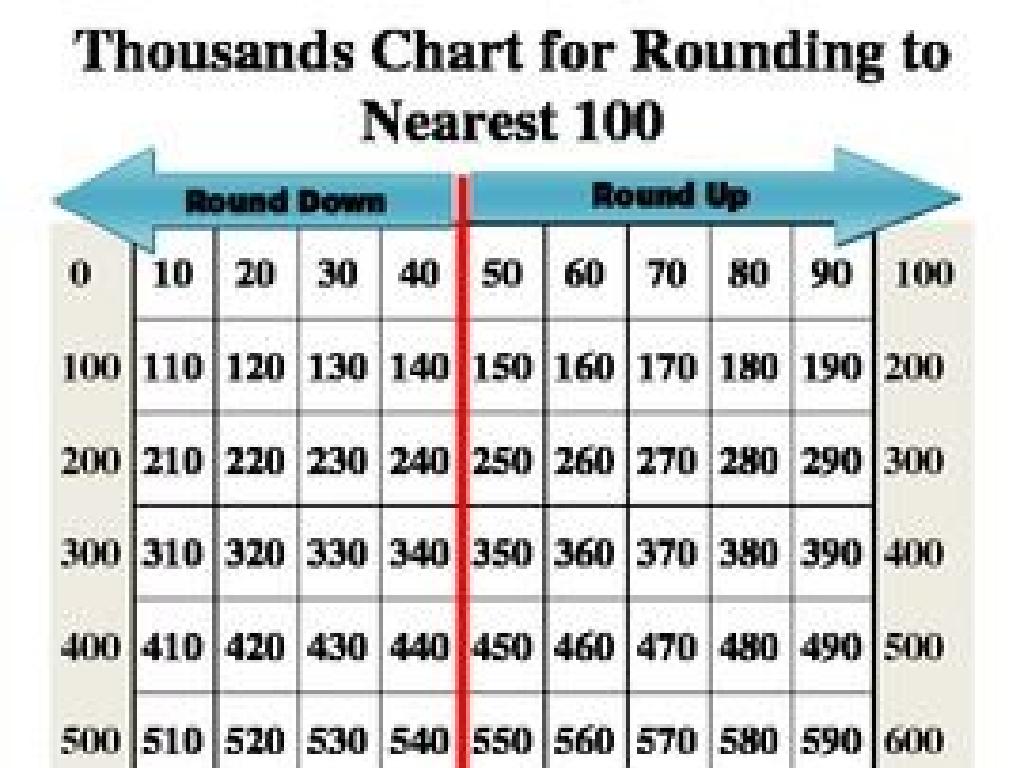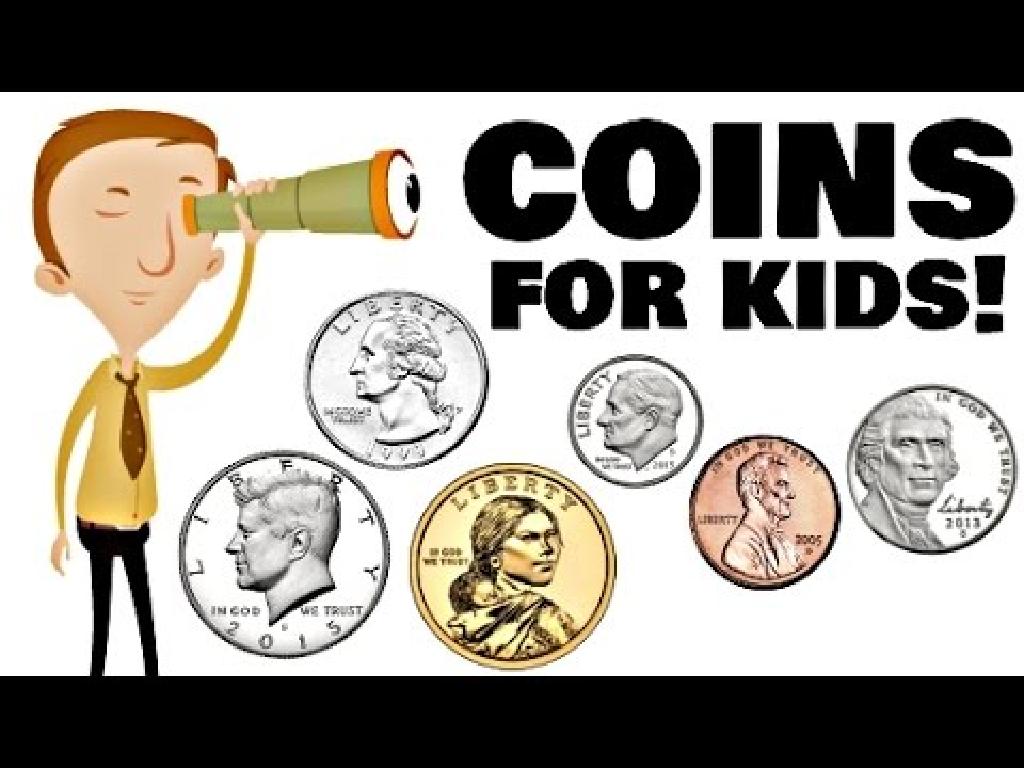Convert Between Place Values
Subject: Math
Grade: Fourth grade
Topic: Place Value
Please LOG IN to download the presentation. Access is available to registered users only.
View More Content
Converting Between Place Values
– Grasping place value importance
– Place value determines a digit’s value.
– Place value in everyday math
– Helps in addition, subtraction, etc.
– Today’s goal: Conversion mastery
– Learn to switch between ones, tens, hundreds.
– Practice with real examples
|
This slide introduces the concept of place value and its significance in mathematics, particularly for fourth graders. Begin by explaining that the value of a digit depends on its position within a number. Emphasize how understanding place value is crucial for performing basic arithmetic operations like addition and subtraction. Today’s objective is to ensure students can confidently convert between different place values, such as from ones to tens or tens to hundreds. Provide real-life examples and practice problems to solidify their understanding. Encourage students to ask questions and participate in hands-on activities to reinforce the lesson.
Understanding Place Value
– Place value in numbers
– The position of a digit determines its value
– Each place is 10 times the next
– Moving left, each place is 10x larger than the one to its right
– Examples: Ones, Tens, Hundreds
– 1 in 315: 5 Ones, 1 Ten, 3 Hundreds
|
This slide introduces the concept of place value, which is fundamental to understanding the base-10 number system used in mathematics. Emphasize that the value of a digit is determined by its position within a number. For example, in the number 315, the 5 is in the ‘Ones’ place and is worth 5, the 1 is in the ‘Tens’ place and is worth 10, and the 3 is in the ‘Hundreds’ place and is worth 300. Use visual aids like place value charts to help students visualize the concept. Have students practice identifying the place value of digits in various numbers and multiplying by 10 to understand how the value increases with each shift to the left.
Converting Ones to Tens
– Understanding place value conversion
– 10 ones equal 1 ten
– Remember, grouping 10 ones together makes a ten!
– Visual example with blocks
– Imagine exchanging 10 single unit blocks for a larger ten-block
– Practice conversion
– How many tens do we get from 30 ones?
|
This slide is aimed at helping fourth-grade students understand the concept of place value conversion, specifically converting ones to tens. Start by explaining that in our number system, every time we group ten units together, we can ‘trade’ them for one unit of the next highest place value. Use visual aids like blocks or drawings to show 10 individual ones being grouped together to form one ten. For the practice question, guide students to divide 30 by 10 to find out how many tens are in 30 ones, reinforcing the concept that 10 ones make up 1 ten. This exercise will help solidify their understanding of place value and prepare them for more complex conversions.
Converting Tens to Hundreds
– Understanding tens and hundreds
– 10 tens equal 1 hundred
– Just like 10 ones make a ten, 10 tens make a hundred.
– Visual example with ten-bars
– Imagine exchanging 10 ten-bars for a larger hundred-block.
– Practice conversion
– How many hundreds are there in 200 tens?
|
This slide is aimed at helping fourth-grade students understand the concept of place value, specifically converting tens to hundreds. Start by explaining that in the same way 10 single units make up a ‘ten’, 10 ‘tens’ make up a ‘hundred’. Use visual aids like ten-bars and hundred-blocks to help students visualize the concept. For the practice question, guide students to divide the number of tens by 10 to find the number of hundreds. In this case, 200 tens divided by 10 equals 20 hundreds. Encourage students to use this method to convert tens to hundreds in various examples.
Converting Hundreds to Thousands
– Understanding place value conversion
– 10 hundreds equal 1 thousand
– Just like 10 dimes make 1 dollar
– Visual example with blocks
– Imagine trading 10 small blocks for a big one
– Practice conversion
– How many big blocks for 3000 small ones?
|
This slide is aimed at helping students understand the concept of place value conversion, specifically converting hundreds to thousands. Start by explaining that in the same way 10 dimes make up a dollar, 10 hundreds make up a thousand. Use a visual example, such as hundred-blocks and thousand-cubes, to illustrate this point. For the practice question, guide students to apply this knowledge by dividing 3000 by 10 to find out how many thousands are in 3000 hundreds. This exercise will reinforce their understanding of place value and prepare them for more complex conversions.
Converting Between Place Values
– Each step up multiplies by 10
– Moving from ones to tens, tens becomes ten times bigger.
– Move left to increase value
– Tens to hundreds, hundreds are ten times tens.
– Move right to decrease value
– Hundreds to tens, tens are ten times smaller.
|
This slide is designed to help students understand the concept of place value and how to convert between them. Emphasize the pattern that each step up the place value chart (moving left) means multiplying by 10. Conversely, moving one step down (moving right) means dividing by 10. Use examples like 1 ten = 10 ones, or 1 hundred = 10 tens to illustrate the concept. Have students practice with different numbers, moving them up and down the place value chart to solidify their understanding. This foundational knowledge is crucial for their ability to perform operations with larger numbers and understand the base-10 number system.
Converting Place Values in Real Life
– Understanding money conversions
– How many pennies make a dime? How many dimes make a dollar?
– Converting distances
– How many feet are in a yard? How many yards in a mile?
– Practice with pennies to dollars
– If you have 1000 pennies, how many dollars is that?
– Real-world application
|
This slide aims to help students understand the concept of place value through practical examples. Start by discussing money, explaining how 10 pennies make up a dime and 10 dimes make up a dollar, reinforcing the idea of grouping in tens to convert between place values. Then, move on to distance, showing how 3 feet make a yard and 1760 yards make a mile, illustrating different place value conversions. The practice problem involving pennies and dollars will give students a chance to apply what they’ve learned. Encourage students to think of other examples where they convert units, such as time (minutes to hours) or volume (cups to pints). This real-world connection helps solidify their understanding of place values.
Class Activity: Place Value Conversion Game
– Pair up for conversion fun
– Use blocks to understand place values
– Blocks represent ones, tens, hundreds
– Write down your conversion results
– Class review of everyone’s answers
– Discuss different methods used
|
This interactive class activity is designed to help students understand the concept of place value through a hands-on experience. By working in pairs, students will use place value blocks to visually and physically convert values, which reinforces their understanding of ones, tens, hundreds, etc. After completing the conversions, each pair will write down their results, which will then be reviewed collectively as a class. This will allow students to learn from each other and clarify any misconceptions. As a teacher, be prepared to guide the students through the activity, provide examples if necessary, and facilitate the class discussion afterwards. Possible activities for different pairs could include converting between different place values, such as hundreds to tens or tens to ones, to ensure a comprehensive understanding of the concept.
Wrapping Up: Place Value Conversion
– Recap place value conversion
– Why mastering this is key
– Understanding place values helps in all areas of math.
– Homework: Conversion worksheet
– Worksheet to reinforce today’s lesson.
– Practice makes perfect!
– Keep practicing with different numbers!
|
As we conclude today’s lesson, it’s important to review the concept of converting between place values. Emphasize to students that mastering this skill is crucial as it forms the foundation for more complex mathematical operations they will encounter in the future. For homework, assign the Place Value Conversion Worksheet to provide them with the opportunity to apply what they’ve learned. Encourage them to practice regularly, as familiarity with place value conversion will greatly benefit their mathematical fluency. In the next class, be prepared to review the homework, answer questions, and provide additional practice if necessary.





